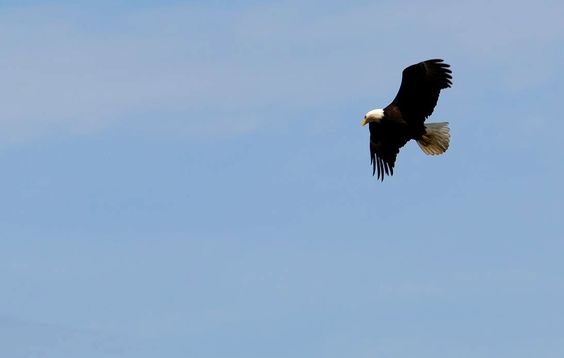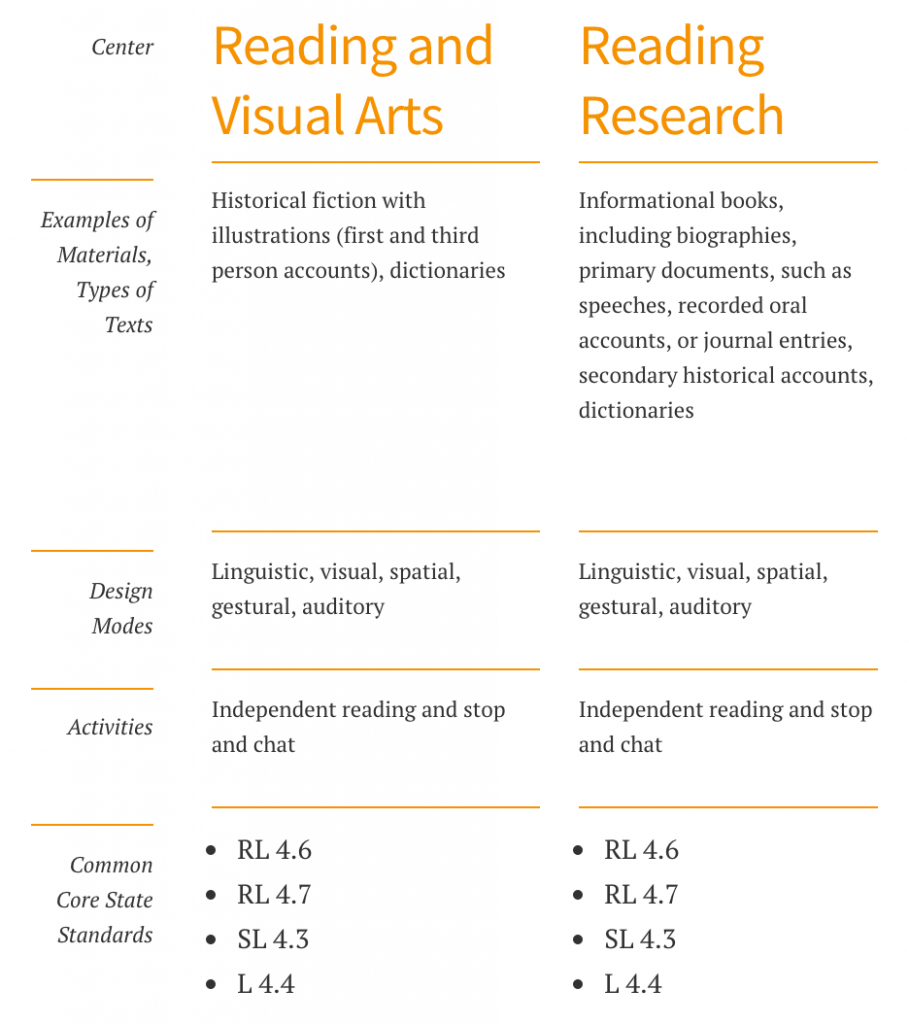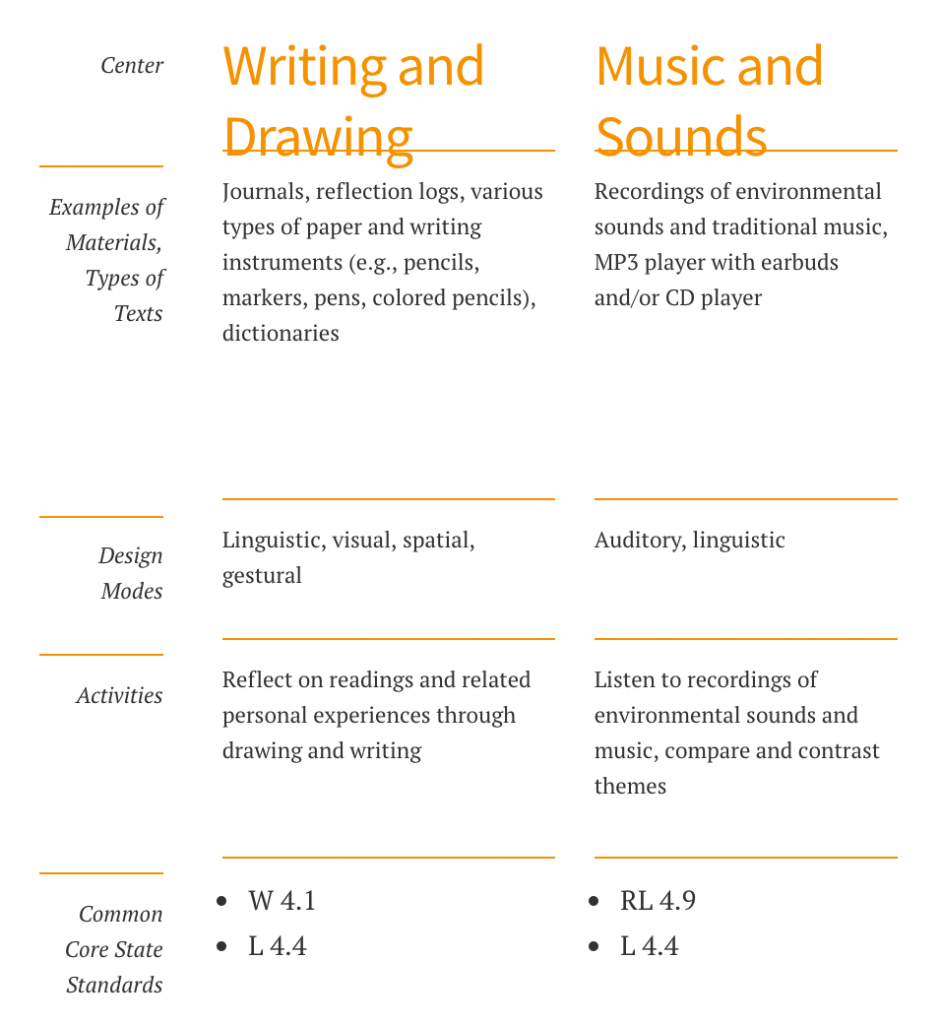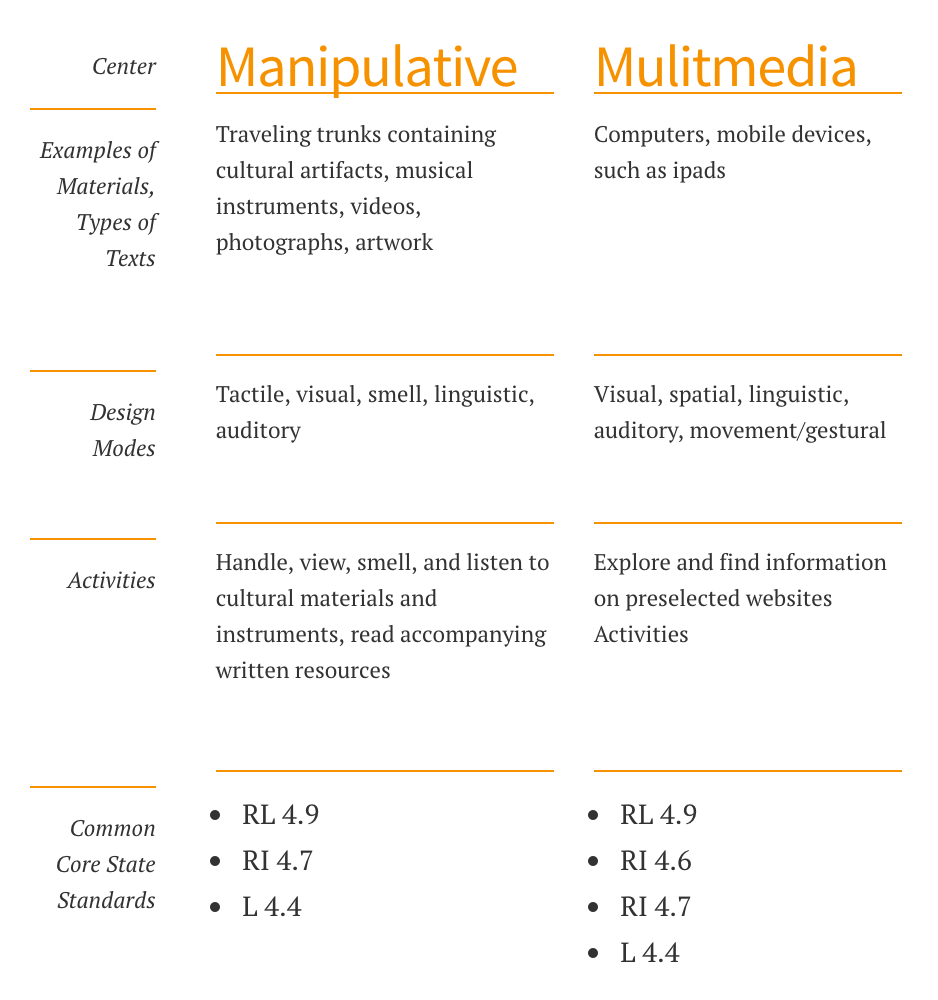(This is the Lesson Plan 4 for Ella Inglebret’s curriculum, “Telling the Lewis and Clark Story.”)

Photograph by Nick Sanyal, Used with Permission
OVERVIEW
In this lesson plan, students form small groups to plan and research the Lewis and Clark story using a place-based multiliteracies approach. The teacher prepares for the episode by: (a) setting up learning centers in the classroom and (b) exploring options for a field trip to a tribal museum, center, or park. Two examples of text sets for use in the learning centers are provided. The first text set represents multiple tribal and non-tribal perspectives regarding the Lewis and Clark expedition and is designed to provide experiences involving a range of design modes (e.g., linguistic, visual, auditory, spatial, tactile, smell/taste, movement/gestural, spiritual). A second example of a tribe-specific text set for the Clatsop-Nehalem peoples is provided, as well as a list of suggested field trip sites, identifying examples of tribal museums, centers, and parks.
LESSON PLAN
Selected Common Core State Standards
CCSS.ELA–Literacy
- Reading–Literature 4.6, 4.7, 4.9
- Reading–Informational Text 4.6, 4.7
- Writing 4.1
- Speaking and Listening 4.3
- Language 4.4
Entry Questions
- How does culture relate to the way a story is told?
- How does the story of Lewis and Clark expedition change when tribal perspectives are added?
MATERIALS
Texts
PDF: Text 4-1 Learning Center Text Set — Multiple Tribal and Non-tribal Perspectives
PDF: Text 4-2 Learning Center Text Set — Clatsop-Nehalem Peoples Intermediate Grades (4-5)
PDF: Text 4-3 Place — A Poem
PDF: Text 4-4 Examples of Field Trip Sites: Tribal Museums, Centers, and Parks
PDF: Text 4-5 Trail Tribes Websites
Reproducibles
PDF: Reproducible 4-1 KWL Chart
PDF: Reproducible 4-2 Getting Started: Student Project Planning Guide
PDF: Reproducible 4-3 Researching the Story Guide
Supplies
- Journal (also used in Episodes 1 and 2)
- Trail Portfolio (also used in Episodes 1, 2, and 3)
Learning Spiral
Critical Framing
Learning Modalities
- Auditory
- Visual
- Movement/Gesture
- Linguistic
- Tactile
- Spatial
- Spiritual
- Smell/Taste
ACTIVITIES
Learning Centers
The teacher sets up learning centers, such as those presented in the table below. These centers are designed to provide learning opportunities for students through a variety of text types, design modes, senses, and activities. Refer to the two suggested text set examples—Texts 4-1 and 4-2.
Learning Centers Examples
Exploring Tribal and Non-Tribal Perspectives of the Lewis and Clark Story



Eagle Eye Perspective
Day 1
Tell students that for this episode they will continue using their “eagle eye” perspective. Remind them that the eagle could have seen and observed both the expedition members (a perspective representing “from the river”) and the tribal members (a perspective representing “from the riverbank”). It could have seen or observed both perspectives from different angles – flying in from a range of directions and from high and low. The eagle could have used a variety of senses – seeing, hearing, moving, touching, smelling, and tasting. Just like the eagle, students will have the opportunity to view and explore a variety of materials in learning centers. These learning centers provide information and many examples of design modes that might be used in the process of designing a new symbol for the Trail. Remind students that this symbol should represent “bridge building” between tribal and non-tribal perspectives.
Form small groups of 4-5 students. Each group will work as a project team for this episode with the goal of planning, gathering, and organizing information and ideas that will contribute to the design of a new Trail symbol. Student teams will be guided by a three-stage process: (a) planning, (b) researching, and (c) designing the symbol.
Team Planning
Day 1
Provide each student with a copy of Reproducible 4-1, KWL chart and Reproducible 4-2, Student Project Planning Guide. Each team will complete the K (what the students know) and W (what the students want to know) sections of their KWL chart. Next, they will complete the Student Project Planning Guide that involves answering questions and describing components of the project, including topic, purpose, perspective, audience, design, actions they will take to promote cross-cultural understanding, and reflection. As part of this process, each team will consider the strengths and skills of its individual members. For example, one student might be particularly savvy with technology so this student might explore resources available in the technology center; another student might have artistic skills so might gather ideas from the reading/visual arts center, and so forth.
Research/Organizing
Days 2-4
Provide each student with a copy of Reproducible 4-3, Researching the Story Guide, to use when exploring materials in the learning centers. It is suggested that 30-minutes per day be allowed for participation in self-selected activities. Students might work in pairs or as individuals, depending on the area of focus. Designate a time that students should report back findings to their team members. As students gather, review, and organize materials, they apply the place-based multiliteracies vocabulary. For example, materials might be organized by placing them into sections in a notebook or in an electronic document, according to elements of “place”, “design modes”, or combinations of these. Instruct each student to record a one-paragraph written reflection in their journals on a daily basis regarding the question, “How does the story of Lewis and Clark expedition change when tribal perspectives are added?”
Field Trip
Days 5-6
Select a Tribal Museum, Center, or Park near your school and schedule a visit. (See Text 4-3.) Locate information regarding the specific tribe that can be reviewed prior to the trip. Some sources of information include websites for the individual tribes or the Trail Tribes website. Additional information regarding contents of the trailtribes.org website is included in Text 4-4 in Appendix E. On the way to the tribal center leave time to stop at pertinent roadside displays or signs. Give students the option of taking photographs of these so they can be referred to during the symbol designing stage. Two questions to consider in preparation for and during the field trip might be “How does culture relate to the way a story is told?” and “How does the story of Lewis and Clark expedition change when tribal perspectives are added?” In addition, have each student team develop a list of questions that will help them gather information pertaining to their symbol design during the field trip.
Post-Feild Trip Letter Writing
Day 7
Instruct students to compose a thank you letter that will be sent to the museum staff. In the letter each student should identify two key ideas that were made by the exhibits and provide two points of evidence that the authors presented to support these key ideas. Instruct students to place all Episode 4 materials into his/her Trail portfolio.
DIFFERENTIATED INSTRUCTION
Advanced
- Learning centers are set up to meet individual student needs and allow for use of a range of design modes
- Read advanced texts
Emerging
- Learning centers are set up to meet individual student needs and allow for use of a range of design modes
- Focus on use of only 1-2 texts to examine perspectives or locate information
- Guided reading session in which the teacher responds strategically with cues and prompts to aid comprehension of a text
SUGGESTED FORMATIVE ASSESSMENT OF LEARNING OUTCOMES
- Students complete the K and W sections of a KWL chart
- Students respond to questions on a Student Project Planning Guide
- Students respond to questions on a Researching the Story Guide
- Students write a thank you letter
